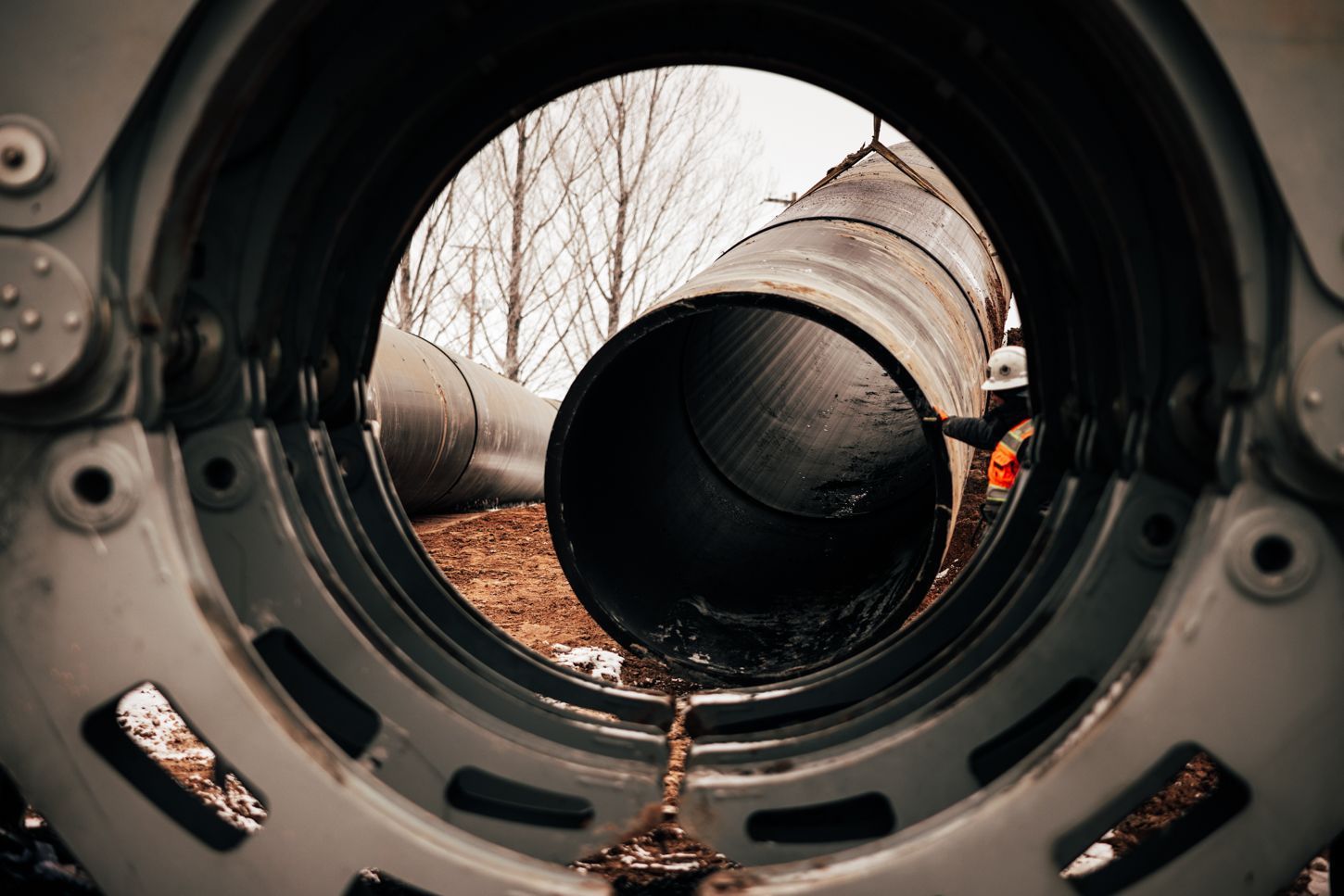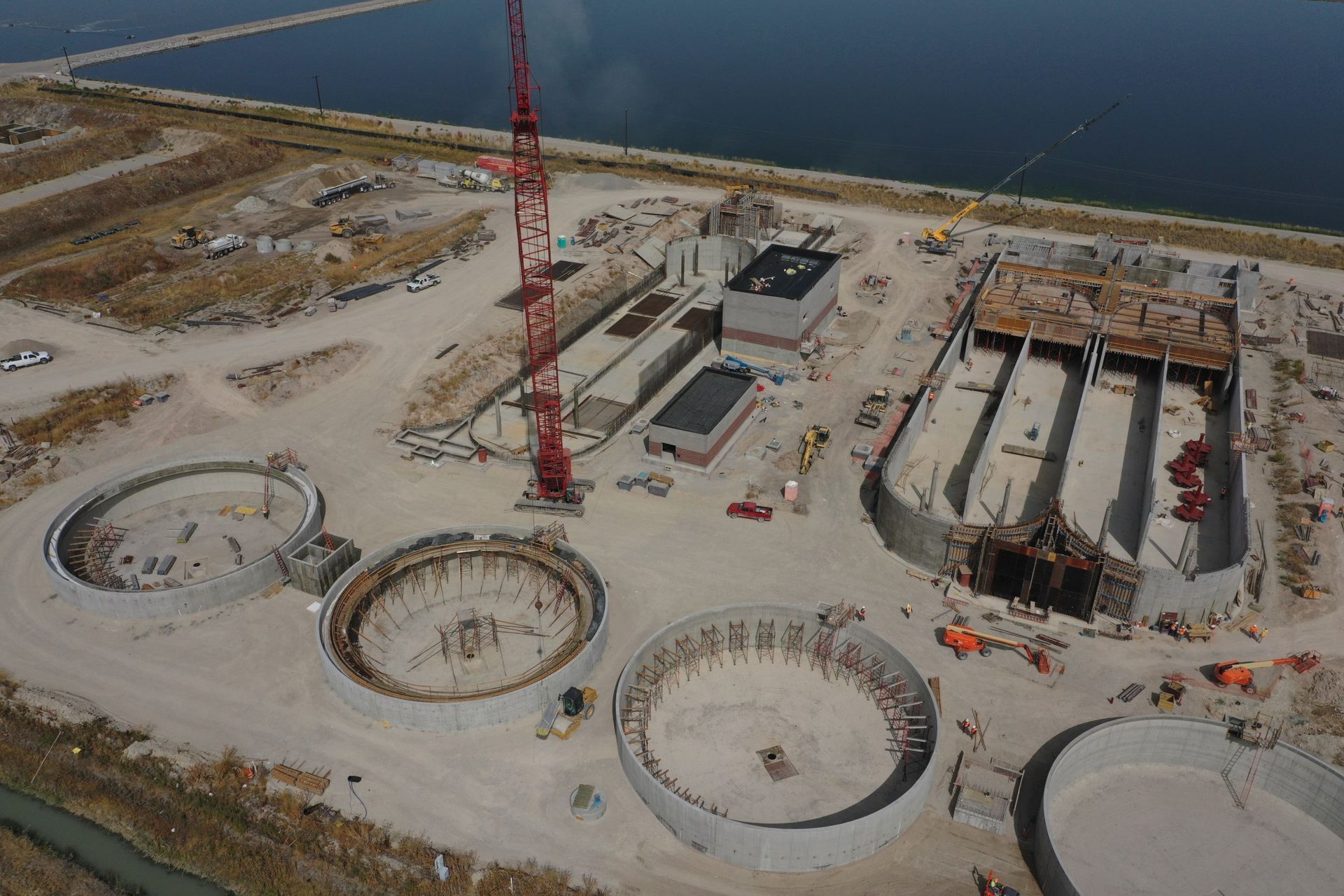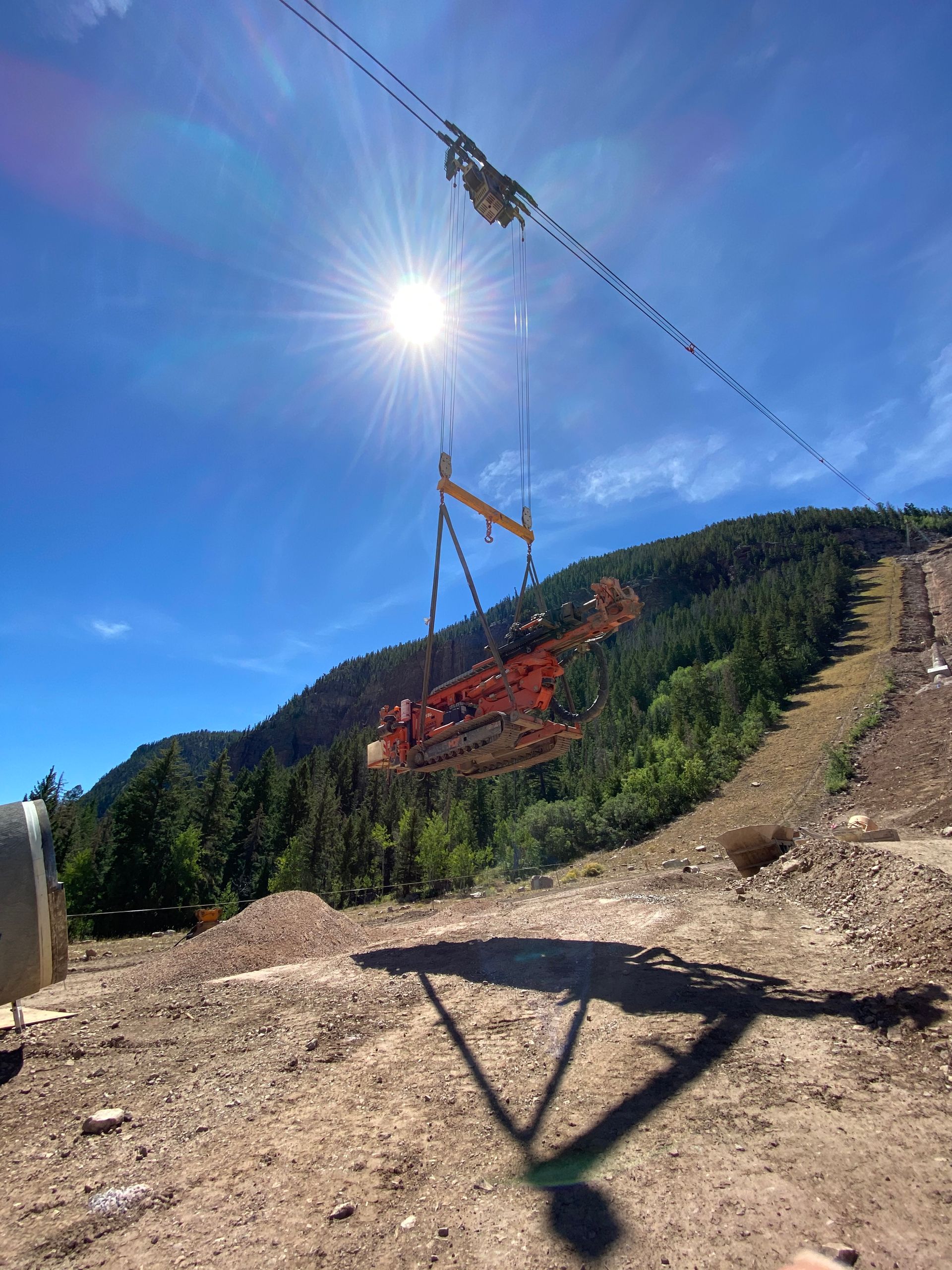Municipal/Utility

Work continues to grind forward on the mammoth new Salt Lake City Water Reclamation Facility (WRF)—a critical $850 million project being built by a joint venture of the Salt Lake regional offices of Sundt Construction and PCL Construction that will replace the current facility in North Salt Lake once it's turned over to SLC's Department of Utilities (SLCDPU) in July 2026. As it stands, this is the second-largest project in City history, trailing only the recent $2 billion-plus Salt Lake International Airport Redevelopment (Phases 3-4 ongoing), and one of the most technically challenging projects in the state. "We are up for the challenge every day—the magnitude of this thing is unreal," said Manny Diaz, Project Manager for Salt Lake-based Sundt, as he drove around the massive 30-acre site in late-January, a worksite teeming with 300 current employees (it will peak at 400 workers this summer) and myriad complicated structures being built simultaneously. Diaz is a long-time veteran of the water reclamation facility industry—this project marks plant No. 26 in his own personal history—and he was brought in a year ago by Sundt because of his expertise. When he arrived in Salt Lake at the beginning of last year, it was right smack dab in the middle of what proved to be a record-breaking year for snowfall. "It was quite a welcome to Utah!" Diaz chuckled. "We keep very close tabs on the weather." And while crews haven't been subjected to the same inclement weather this winter, site conditions are still generally wet and muddy, and the difficulties associated with building the various structures are constant. Crews are nearing the halfway mark, so certainly it's a milestone worth acknowledging, even though a mountain of construction is still left to climb. "It's such a huge accomplishment to be this far," said Jason Brown, Deputy Director of Public Utilities for SLC. "We've faced a lot of challenges, Covid, material shortages [...] it's amazing to be part of a team that works so well together. We still have a long way to go, but we'll get there. We've made a lot of progress and should be proud, but it's hard to celebrate success with so much work still ahead." Diaz, along with PCL Project Manager Shayne Waldron, said crews recently achieved a major milestone: one million hours worked, a notable accomplishment. “Achieving the ‘one million hours worked’ milestone is a testament to the coordination and collaboration required of a project this size," said Brown, adding that the new WRF project benefits from regular and ongoing staff collaboration, under the watch of Sundt/PCL, designers AECOM and Jacobs, and SLCDPU leadership. “This [milestone] is the culmination of many different efforts,” added Mauricio Ramos, District Manager for PCL’s Civil Infrastructure Division. “From local engineers to pipe layers, journeymen, construction trade workers, foremen, and general laborers, every team member has been instrumental in reaching this benchmark. The collaboration between PCL and Sundt has been a testament to our shared commitment to excellence and innovation.” "Our crews are working together seamlessly to ensure that the final product meets the goals and needs of the community," said Sam Reidy, Senior VP and District Manager for Sundt. "Celebrating this milestone recognizes the hard work and commitment each member of the project team has made to this project and the Sundt/PCL partnership." Diaz and Waldron said soil conditions challenged the team right out of the gate and took significant time to stabilize the site. "At the very beginning, the project was designed to be built on top of where the sludge beds were at, but it turns out the sludge beds were on shaky ground," said Diaz. "This whole area is young in age, so it's all soft clays and sands," added Waldron. "Soft clays are compressible, so the big issue is settling. It would have [cost] $80 million in piles to shore it up, and then in between buildings you have all the pipe and utility duct banks, so they would almost need to be built on piles." Waldron said the idea came up to pre-load the whole site, where crews built a flat pad, installed wick drains, then pre-loaded 30 ft. of dirt, with drains going down 125 feet and providing a way for water to be pushed out of the clay. "We had over seven feet of settlement," said Waldron. Crews also set up sophisticated monitoring equipment "to see where ground was settling and what layers were compressing the most. It was really scientific—a lot more than I've seen before." Diaz said it took six months to haul in the fill dirt where it remained in place for eight months, then took another six months to excavate out—close to one million yards of total material. It was an exhaustive process, with an average of 400 trucks per day and close to 500 trucks hauling 18,000 tons on the best day. Having a cohesive, highly collaborative team of designers and construction experts has been a boon to the project schedule. Once completed, Salt Lake City’s new WRF will serve over 200,000 residents as well as those who commute downtown to work or visit Utah's capital. It will replace the City’s current—and only—wastewater treatment facility, which is over 55 years old and near the end of its service life. Maintaining reliable operations at the existing facility while constructing the new WRF nearby has been critical for the project’s success. Since breaking ground in 2019, the project team has completed approximately 65% of structural concrete work as well as soil mitigation, deep foundation work, and the installation of underground utilities. In late January crews began excavating dual 63-in. diameter pipelines, along with a 78-in. effluent pipe that is being hauled one giant piece at a time from Canada, a new type of corrugated HDPE with welded joints that should provide greater durability. All in all, crews will ultimately pour 93,000 CY of concrete and install 22 million pounds of reinforcing steel, along with 89,000 LF of underground pipe ranging in diameter from 1.5-in. to 78-in. "The camaraderie among the team members allows for a very cohesive team," said Diaz. "The only way you can tell who works for who is by the color of the truck. We have a 'one project' mentality. The complexity of the job and being trusted to lead this effort [...] have been [important] for me. It's been a great job so far." Diaz, who said his first wastewater treatment plant was in North Miami Beach in the late 80s right after he graduated from college, hopes to remain in Utah once this job is completed and turned over to the client by mid-2026. “I plan on staying here and continue to work on treatment plants in Utah,” he said. “There’s a lot of work here. We have vast experience, and we have a lot of people who want to be in Utah—it’s a great place to live. Let’s do it!”

It may have required the largest HDPE pipe ever utilized in the United States with installation occurring during a record year for snowpack in Utah, but the long-term Steinaker Service Canal Enclosure Project near Vernal is now halfway complete. The canal carries water from Steinaker Reservoir to points nearly 12 miles south throughout the Ashley Valley, providing irrigation to more than 14,700 acres of land as well as municipal and industrial water users. The clay-lined canal was originally constructed in 1961-62, with initial water delivery in 1963. Recent improvement projects have been designed to turn the canal into a much more efficient pressurized pipe delivery system. According to William Merkley, General Manager at the Uintah Water Conservancy District (UWCD), which oversees the canal, the first section of the project, (Reach I), was completed in 2017 and saw the three southernmost miles of the canal converted to pipe at a cost of $10 million. The latest sections of the project, Reach II and Reach III, began in September 2022 and extend pipe nearly three more miles northward from the previous ending point, with an estimated price tag of $27 million. Irrigation was restored to water users in June. This currently leaves the canal in a hybrid condition—with half remaining an earthen canal and the other half utilizing pipeline. Due to funding constraints, Merkley said it is uncertain when UWCD will continue installing pipe on the remaining six miles. But, he noted, keeping the project moving forward is important for future water management interests throughout the Ashley Valley. “Like many areas of the state, the Ashley Valley experiences wide fluctuations in seasonal water supply and prolonged periods of severe drought,” Merkley said. “As a wholesale water supplier for both irrigation and municipal/industrial use, the Uintah Water Conservancy District feels a strong stewardship responsibility to manage its water supplies as efficiently as possible. The open canals used successfully for so many decades [need] major rehabilitation, and seepage losses common in these earthen channels are no longer acceptable.” Largest Pipe in the Nation Adapting to the current hybrid condition of the canal while updating to pressurized pipeline presents UWCD and its project designers with many unique challenges. “With each new section of canal piped, consideration of upstream conditions and structures is critical,” Merkley said. “Because higher water operating levels must be maintained upstream of the piped sections to sustain the necessary flows and head pressures, upstream farm bridges, turnouts and canal embankments all must be raised.” One of the main project challenges is what also makes it unique. Designers decided to use 78-inch diameter HDPE (high-density polyethylene) pipe—the largest diameter ever used in the U.S. Known for its flexibility and impermeability, HDPE pipe is often used to replace aging concrete or steel pipelines. “Although HDPE pipe is commonly used for canal enclosures in our region, the use of such large pipe was unprecedented,” Merkley said. “The large diameter was necessary due to the hybrid nature of our system, the shallowness of the canal’s slope, and the flows required to meet customer demands. According to Mike Cottle, Project Director for BHI in Vernal, which handled construction for the project, the large pipe diameter enables enhanced control over the water flow, minimizing loss and maximizing the efficiency of water distribution. Taking those colossal sections of 78-inch diameter pipe—each one checking in at 53 feet in length, tipping the scales at 16,500 pounds and filling an entire semi-truck load—from the drawing board to the ground itself, however, presented myriad obstacles. “Being the first to install the largest solid wall HDPE pipe in the United States, we faced considerable challenges and a significant learning curve,” Cottle said. “An early obstacle we encountered was determining how to install bends in the project. Given the pipe’s massive 78-inch diameter, we had to figure out the maximum bend radius that the Talon fusion machine could straddle over the pipe without causing damage. Once we determined this, we collaborated with the engineering team to design all the necessary bends and radiuses.” The installation of such a large pipe, Cottle said, demanded equally substantial equipment, including multiple fusion machines, 400 class excavators, articulating haul trucks and other equipment, each weighing 100,000+ pounds. “From an engineering perspective, the design incorporates innovative features to optimize the canal’s performance,” he said, adding the design also encompasses air valves, manways, drains, screening structures, and other vital components that ensure smooth operation and maintenance of the canal system.

So far in 2023, Utah’s water situation has been auspicious. It has been a wet season not seen in the state in well over a decade. It has those involved in water infrastructure—from water conservancy districts and contractors and engineers to wastewater treatment engineers—excited about the possibilities in Utah to reverse the recent trends in water use. As water resource administrators keep a steady rhythm on an important note—water conservation—three projects from around the state highlight decades of effort to improve water infrastructure. Rebuilding Old Tech One of the recent projects is the Strawberry Water Users Association (SWUA) Forebay Structure rehabilitation and reconstruction of the previous 100-year-old forebay structure. According to water engineering experts and project designers at Franson Civil Engineers, its functionality and footprint will be nearly identical while still improving technology and processes. As Eric Franson, President of Franson Civil Engineers explained, “The structure was working, so we weren’t reinventing the wheel.” But you can make the (water) wheel better. After completing the design, water was pulled out of the canal in the fall of 2022, allowing construction teams access to build the new structure. But construction brought some unique, weather-related challenges. The project’s restrictions limited work strictly to winter months. Bone-chilling winds whipped the WW Clyde construction team as they pumped massive amounts of necessary concrete. Water from Strawberry Reservoir will pass through the new, more efficient forebay structure to drop off some of its sediment before reaching the hydropower plant turbines and the water’s ultimate destination: Spanish Fork River, serving water shareholders across Utah Valley. After installing screening components for sediment removal, construction teams installed digital infrastructure like improved SCADA components to improve remote operability. So far, Franson said that sediment removal capabilities have improved, resulting in cleaner water for both the hydropower turbines and irrigation and more efficient use of the valuable resource.



















